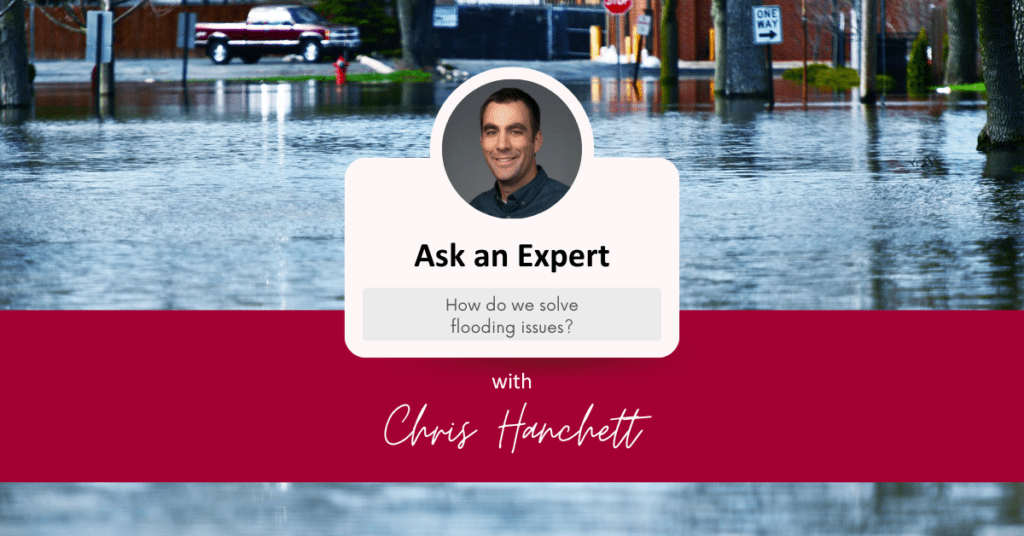Our water resources clients often ask us, “how do we solve flooding issues?” We spoke to Natural Resources Project Manager Chris Hanchett to learn how engineers tackle the unique challenges stormwater presents.
Going down the drain
Climate change and rapid community growth can put additional strains on aging infrastructure and natural elements, resulting in the need for modernized floodwater solutions. Unfortunately, there is not a one-size-fits-all solution to flooding issues. Engineers must first identify what is causing the problem, which often comes down to challenges with water conveyance, volume, or both.
Conveyance: When a drainage system cannot move water fast enough, flooding is a real threat. This can be caused by undersized inlets or pipes, clogged systems, improperly spaced drains, or other design flaws.
Volume: Low lying areas or storage basins without enough storage must be addressed to prevent constant overflow and issues for surrounding properties and transportation systems.
Regardless of the issue, stormwater management experts must address not only how to move water from the impacted area, but also where to distribute the excess without causing issues elsewhere. Stormwater has to go somewhere, so engineers must zoom out to understand how actions in one location will affect environments downstream.

“Stormwater management requires comprehensive engineering solutions. You can always build bigger pipes; the real challenge comes with figuring out how to redistribute that water without causing another problem elsewhere.”
Chris Hanchett, Natural Resources Project Manager
Targeting the cause
Flood control measures must meet both regulatory requirements and environmental feasibility to be a viable option. Due to the countless considerations and variables at stake, each flooding concern must be met with a custom solution. Depending on the size and location of the flooding issue, engineers may choose to build walls/berms, raise or lower floodplains, deepen or create additional flood storage, or use other water supply engineering techniques to get the best end result.
Nature-based solutions also offer green alternatives to stormwater management. This methodology encourages the use of native elements to address engineering challenges. For example, an open field with inefficient drainage could be converted into a natural bioswale that intentionally stays wet. When possible, using what’s already present in the area is a great advantage for both people and the environment.
Nature-based solutions for flood control include:
- Wetland restoration: Wetlands naturally protect against flooding thanks to their ability to store and absorb water.
- Streambank stabilization: Addressing erosion along streams and rivers can help better direct water flow and reduce sediment movement.
- Green infrastructure: Introducing rain gardens, permeable pavements, or green roofs into urban environments can help with stormwater runoff.
“Depending on what your site is, you can incorporate as much green as possible. V3 works with clients to consider the whole area and find the best possible flood control solution.”
Work with V3’s water engineers
V3 promotes a fully integrated approach to stormwater management and flood prevention, implementing proven sustainability techniques for integrated resource management. Connect with our team to learn more.

